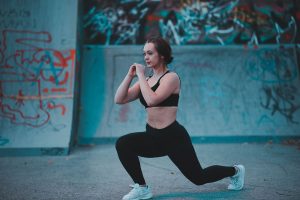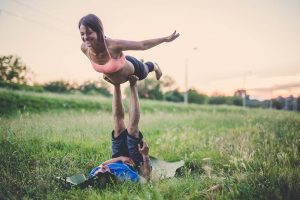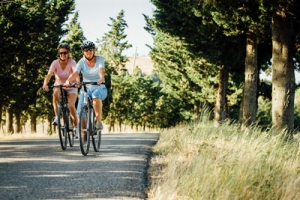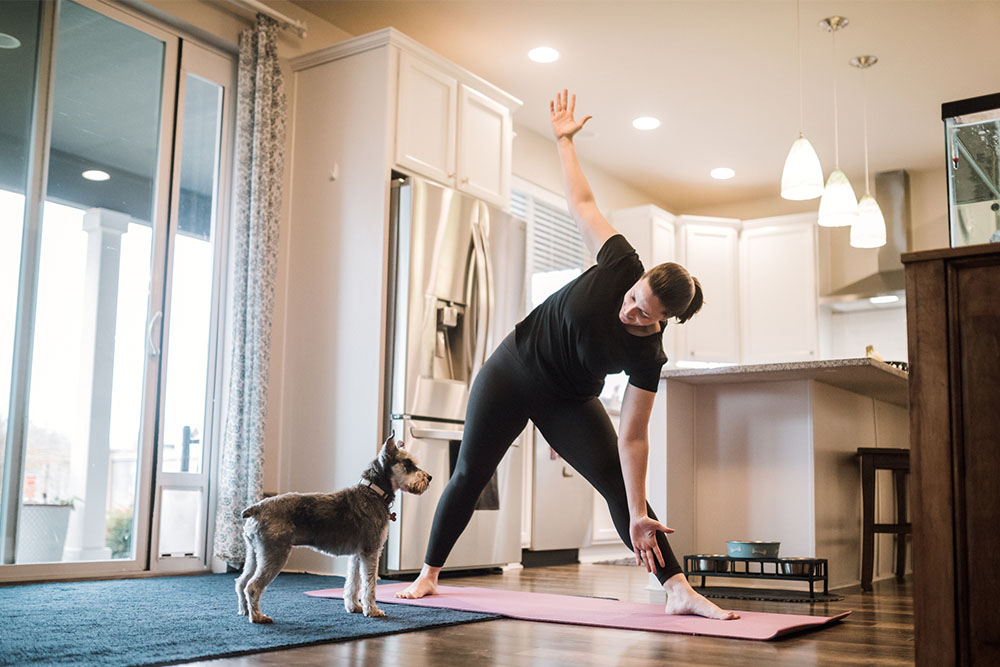How to Set Health Goals After COVID-19

We are almost there.
By all accounts, things are finally on the up, and we should be able to get back into our normal routine over the coming months. Which means that you have a unique choice to make.
You can choose to go back to the same old habits. The same way of eating. The same way of exercising.
You know, the same health behaviors that you always had.
Or you can improve.
You can come back with a vengeance. With the intent to take your health into your own hands and run with it.
You can become the healthiest person you possibly can.
What states are opening their gyms?
When are gyms opening up? Well, we have seen most gyms reopen their doors across most states in the USA.
In fact, at the time of writing this article, it looks as if the only states choosing to keep gyms completely closed are Delaware, Illinois, and New Jersey.
Additionally, Oregon, Nebraska, California, New Mexico, Tennessee, Virginia, Pennsylvania, New York, and Maine, are entering a status of “regional opening” – which essentially means that governors are allowing counties or regions that meet specific criteria for slowing the outbreak to open ahead of others.
In these same states, the hardest-hit areas remain under stricter lockdowns.
What does open mean?
So, what do I mean by opening?
Well, in short, most gyms are undergoing a three part opening strategy:
- Phase one: reopening strength and cardio areas at a limited capacity to ensure proper social distancing is maintained
- Phase two: things like group fitness classes start up again but in a much smaller size than normal.
- Phase three: they will return to running as normal (although this is a long way away yet).
With this in mind, most locations currently open are doing so under phase 1. This means that most places are enforcing very strict social distancing and cleaning protocols. Many are also letting only a small number of people access the gym at one time.
Is it safe to go to the gym?
Gyms were highlighted as a particularly risky location at the start of the COVID-19 outbreak.
This is because equipment is shared between all members, and social distancing is generally hard to maintain. Moreover, even with strict hygiene measures in place, the risk of cross-transfer is still quite high.
With this in mind, unless you are living in a regional area or in location where cases are extremely low, it might be best to avoid gyms for the near future.
Do not get me wrong – I am as keen to get back into training as the rest of you.
But sometimes common sense must prevail.
How to reset health and fitness goals after COVID-19?
While it may not be the perfect time to dive back into a thorough training regime just yet, it is unquestionably time to prepare. It is time to set some health and fitness goals and get yourself in the right frame of mind for the future.
In my mind, the importance of good self-care and good health habits are paramount.
By looking after yourself you have the capacity to keep yourself disease free, physically strong, functionally capable, and utterly resilient. It is this that keeps you functioning to a high level for the rest of your life.
Hell, this is what will ensure you get the most out of your life every single day.
And in my mind, it comes down to focusing on four key areas:
- Sleep
- Sunshine
- Exercise
- Diet
If you get these four pillars under control, then you are well on your way to an extremely healthy (and happy) life.
Related Article: How to Build Resiliency During A Pandemic
Importance of good sleep
If you want to take control of your health once and for all, you should absolutely start in the bedroom (Chattu, 2019).
Yep, I am talking about sleep.
Sleep is the time when your body repairs and regenerates. It is during sleep that you consolidate new information, assimilate memories, and mentally rejuvenate.
In fact, those key sleep benefits arguably make it the most important part of your day.
This is the reason that poor sleep has been shown to contribute to chronic inflammation, high blood pressure, type II diabetes, heart disease, obesity, certain cancers, depression, and anxiety. It has also been shown to impair cognitive capabilities, inhibit learning, and negatively affect memory.
Like I said – important.
Importance of sunshine
Next up on the list we have sunshine (Mead, 2008; Nair, 2012).
Believe it or not, getting out in the sun is extremely important. See, sunlight is essential to stimulate your production of Vitamin D – and this important mineral has been shown to protect against cancer, heart disease, fractures, muscle wastage, autoimmune diseases, influenza, type II diabetes, and depression.
Obviously, a Vitamin D deficiency increases your risk of each of these.
Interestingly, simply getting out in the sun on a regular basis has also been shown to help fight off feelings of anxiety, and even make you happier.
Walking in sunshine… makes a bit of sense.
The Vitamin D benefits are paramount here – making it integral to health and longevity.
Related Article: 3 Vitamins to Boost Your Immune System Now
Importance of exercise
We have known about the benefits of exercise for decades – but that does not mean that they should not be stated here (Warburton, 2008).
First and foremost, exercise has been shown to prevent against practically every disease on the planet, including the common killers, diabetes, heart disease and cancer. It has also been shown to boost mood and prevent depression and anxiety.
Moreover, it can also increase muscle strength, bone density, and functional capacity – all of which allows you to maintain independence for the rest of your life.
Importance of a good diet
And finally, we have food.
Again, one of the more obvious ones, but no less important (Locke, 2018; Spriet, 2019).
Like exercise, poor eating habits have been linked to an increased risk of developing things like heart disease, type II diabetes, and certain cancers. Moreover, poor diet is almost entirely responsible for the obesity epidemic we are currently experiencing across the world.
Lastly, from a performance perspective, the food you eat fuels your exercise habits. If you are not eating appropriately, then your ability to train – and improve – will be suboptimal.
All of which makes diet a key pillar of health.
Setting health and fitness goals
So, we know that these four things are incredibly important for health – but what sort of goals can we set to make sure we optimize them, and boost our health in the process?
Well, I have put together a list of six key goals that successfully address the four pillars outlined above. I would not necessarily focus on all of these at once, but rather pick one and stick with it for 3-4 weeks, before slowly adding in another one.
Within 6 months you should be completely on top of your health.
- Get 7-9 hours of sleep per night: some great ways to help speed this up is to set a consistent sleep routine (where you go to sleep at the same time every night), avoid phone screens and bright lights for an hour before bed, and avoid caffeine after 3pm.
- Get 30 minutes of sunlight per day: this means going for a short walk every single day out in the sunshine. Or, if you have room for it, eating one meal outside each day.
- Get a minimum of 150 minutes aerobic exercise per week: this means going for a 30-60 minute walk, cycle, run, or swim, 2-3 times per week. Also throwing in a couple of 30 minute high intensity interval sessions will be a great way to boost your fitness (and health).
- Do 2-3 gym sessions per week: these should be full body sessions that revolves around movements like squats, lunges, deadlifts, rows, chin ups, push ups, presses, and planks. These are the exercises that have the greatest carryover to daily life, and should therefore be a priority.
- Minimize your consumption of junk food and refined carbohydrates: this means avoiding things like sweets, candies, pastries, and soda as much as humanly possible.
- Build your diet around quality protein and vegetables: every one of your meals should contain a high quality protein source (i.e. lean meats, eggs, fish, legumes, beans, lentils) and a handful of nutritious vegetables.
There you have it – simple and effective showing you how to reset your health.
Finally, given the current COVID-19 climate, I wanted to provide some information around getting back into exercise safely.
And it all revolves around starting slow.
How to safely workout outside
As far as cardio goes, this means starting off at a lower intensity and lower distance than you would normally.
For longer distance stuff, start with a duration that equates to about 60-70% of what you would normally do. Additionally, keep it reasonably light. This means you should finish your exercise feeling energized and motivated, not completely exhausted.
I would also try and avoid high intensity interval training for about 3 weeks until your body has adjusted to exercise again. While HIIT is a great way to increase fitness quickly, it places a huge amount of load on the muscular system – and very simply, if you are not prepared for it, your risk of injury increases.
How to safely workout in the gym
For weight training, my recommendations are very similar.
Start off using about 60-70 % of the weight you were previously. Additionally, I would strongly recommend that try and keep 3-4 repetitions in the tank every single set for that first 1-2 weeks, rather than pushing to failure.
A few weeks after you start you can slowly increase load and start training to failure a little more often.
Additionally, as I alluded to in this article, you want to make sure you feel completely safe with regards to the current situation before you get back into the gym. So maybe start with cardio, and as the incidence of COVID-19 start to decline, you can start jumping back into the gym.
I know that you are probably itching to get back into exercise – but if you follow these recommendations closely, your risk of injury will be minimal, and your long-term progress will be boosted as a result.
Related Article: The Most Basic, But Effective Home Gym
Take Home Message
Amongst the absurd number of negatives associated with the coronavirus pandemic, there is one small silver lining. You can take control of your health for good.
And using the goals listed in this article, you can.
Seriously, by taking the time to focus on your sleep, diet, exercise, and sun exposure, you can take the first steps to living a linger, happier, life – so what are you waiting for?
References
Chattu, Vijay Kumar, et al. “The global problem of insufficient sleep and its serious public health implications.” Healthcare. Vol. 7. No. 1. Multidisciplinary Digital Publishing Institute, 2019.
Mead, M. Nathaniel. “Benefits of sunlight: a bright spot for human health.” (2008): A160-A167.
Nair, Rathish, and Arun Maseeh. “Vitamin D: The “sunshine” vitamin.” Journal of pharmacology & pharmacotherapeutics 3.2 (2012): 118.
Warburton, Darren ER, Crystal Whitney Nicol, and Shannon SD Bredin. “Health benefits of physical activity: the evidence.” Cmaj 174.6 (2006): 801-809.
Locke, Amy, Jill Schneiderhan, and Suzanna M. Zick. “Diets for health: Goals and guidelines.” American family physician 97.11 (2018): 721-728.
Spriet, Lawrence L. “Performance Nutrition for Athletes.” Sports Medicine 49.1 (2019): 1-2.
You Might Like:














